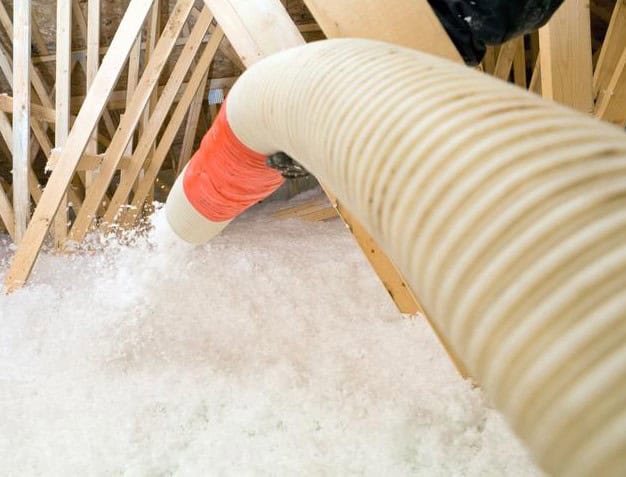
Investing in energy-efficiency upgrades in multifamily affordable housing nationwide has the potential to deliver substantial financial, environmental, and health benefits to building owners and residents—and to have the positive cumulative effect of improving communities and regions on a larger scale.
Unfortunately, the insulation and air-sealing materials most often used are not always the healthiest available—and at worst, can even cause harm. To help change that, NRDC has launched this Guidance for Specifying Healthier Insulation and Air-Sealing Materials, a tool that can be used by building contractors and implementers along the supply chain to make it as easy as possible to get the safest building materials into multifamily affordable housing.
This tool is part of our ongoing effort through the Energy Efficiency for All initiative—involving NRDC and The Healthy Building Network (HBN), Elevate Energy, VEIC, Three3, and the International Living Future Institute to ensure healthy building materials are part of the energy efficiency discussion.
Our publications, Policy Matters: Making Energy Upgrades Healthier for Residents, Workers, and Neighbors, an associate policy fact sheet, and our report, Making Affordable Multifamily Housing More Energy Efficient: A Guide to Healthier Upgrade Materials, all provide feasible and direct pathways to ensure energy efficiency programs and policies meaningfully benefit the health of residents and keep harmful upgrade materials outside of homes.
Why are materials so important?
We understand that weatherization and other energy-efficiency upgrades, particularly in housing that is aged or of inadequate quality, can significantly improve residents’ health by reducing thermal stress, asthma triggers, and energy costs. However, the adverse health impacts produced by chemical emissions from some of the materials commonly used for these upgrades is far less understood.
Some common types of chemicals found in energy efficiency upgrades are halogenated flame retardants, formaldehyde-based binders, isocyanates, and phthalate plasticizers. These chemicals can negatively affect reproduction and fetal development, can contribute to cancer and can cause or exacerbate asthma. These chemicals not only endanger a building’s residents, but also can hurt the workers installing them. More information can be found at: Making Affordable Multifamily Housing More Energy Efficient: A Guide to Healthier Upgrade Materials.
It’s easy to use healthy building materials
Creating the easiest way possible for those implementing energy upgrades is a key strategy in ensuring the heathiest materials are used where they are needed most. Guidance for Specifying Healthier Insulation and Air-Sealing Materials, provides information that can be used to evaluate, select, and write specifications for products that incorporate healthier insulation and air-sealing materials for energy-efficiency upgrade projects. The information is meant to provide guidance to a purchaser or specifier and can be easily modified as needed to meet specific project needs. For implementers, the information can be easily taken from this document for specifications on product type.
We hope our suite of materials will help turbocharge efforts to keep the positive impacts of energy efficiency even more positive for people and the environment.
